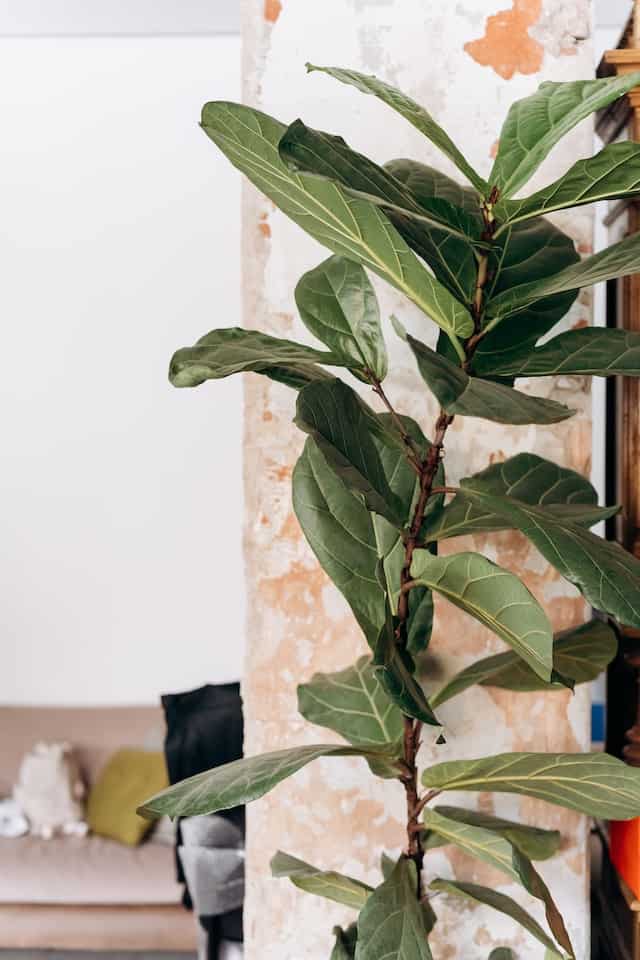If you’ve recently invested in one of these beautiful plants or already have a thriving specimen, you might be wondering how to propagate it so you can enjoy even more of their beauty—or share it with friends. Here, we take you through everything you need to know about propagating fiddle leaf figs successfully.
Understanding Fiddle Leaf Fig Propagation
Propagation refers to the process of creating new plants from an existing one. Fiddle leaf figs can be propagated primarily through stem cuttings and air layering. Each method has its pros and cons, but with the right techniques, you can expand your plant collection effortlessly.
1. Stem Cuttings
Stem cuttings are the most common way to propagate fiddle leaf figs. This method involves taking a cutting of the existing plant’s stem and encouraging it to root and grow into a new plant.
Steps for Successful Stem Cutting Propagation
Select the Right Stem: Choose a healthy stem with at least two or three leaves. Look for a stem that is not flowering or showing signs of stress.
Cut the Stem: Use a sharp, clean knife or scissors to make a cut just below a node (the bump where leaves emerge). The cutting should be around 6 to 12 inches long. Make sure to cut at an angle to increase the surface area for rooting.
Remove Lower Leaves: Carefully strip the lower leaves off the cutting, leaving only a couple of leaves at the top. This prevents rot when the cutting is placed in soil or water.
Let It Callous: Place the cutting in a dry, warm area for 24 hours to let the cut end callous over. This reduces the risk of rot when you plant it.
Choose Your Medium: You can root the cutting in water or directly in soil. If using water, place the cutting in a jar or vase, ensuring the node is submerged but the leaves are above the water. If using soil, fill a small pot with a well-draining mixture (like a blend of potting soil and perlite), and plant the cutting about 2-3 inches deep.
Maintain Humidity and Temperature: Fiddle leaf figs prefer humidity, so consider covering your cutting with a plastic bag or a clear plastic dome to keep moisture in. Place it in a spot with bright, indirect sunlight, away from direct sun exposure.
Wait for Roots to Grow: If you opted for water propagation, roots will typically start to develop in about 4-6 weeks. For soil propagation, it may take a few weeks longer, so be patient!
Transplanting: Once you see a robust root system (around 2-3 inches long), you can transfer the cutting to a pot with a regular potting mix.
2. Air Layering
Air layering is another effective propagation method, especially for larger fiddle leaf figs. This technique allows you to propagate a plant without separating it from the parent until it’s ready.
Steps for Air Layering
Select a Branch: Choose a healthy branch that is at least the thickness of a pencil.
Make a Cut: About halfway through the stem, make a shallow upward cut about one-third of the way through the branch. This cut will stimulate root growth.
Wrap with Moist Medium: After making the cut, cleanly wrap the area with damp sphagnum moss, making sure to cover the cut. Secure this moss in place using plastic wrap or aluminum foil.
Cover and Wait: Cover the moss with plastic wrap to maintain humidity and moisture. Keep an eye on it, ensuring the moss stays damp. Roots should begin to develop in 4-8 weeks.
Sever the New Plant: Once you notice a healthy root system in the moss, cut the branch below the roots and pot it up in a container.
Tips for a Successful Propagation Journey

Patience is Key: Fiddle leaf figs can be slow to root, so don’t rush the process. Ensure you keep the environment stable and avoid over-managing.
Water Wisely: If you’ve chosen soil propagation, don’t overwater. Allow the soil to dry out slightly between waterings.
Lighting Conditions: Bright, indirect sunlight is optimal. Avoid harsh, direct sunlight which can scorch the leaves.
Monitor Pests and Diseases: Keep an eye out for any signs of pests or disease, as young cuttings can be vulnerable.
Conclusion
Propagating a fiddle leaf fig can be a rewarding and enjoyable experience. With the right techniques and a bit of patience, you’ll soon have new plants that are ready to beautify your home or become gifts for friends and family.





